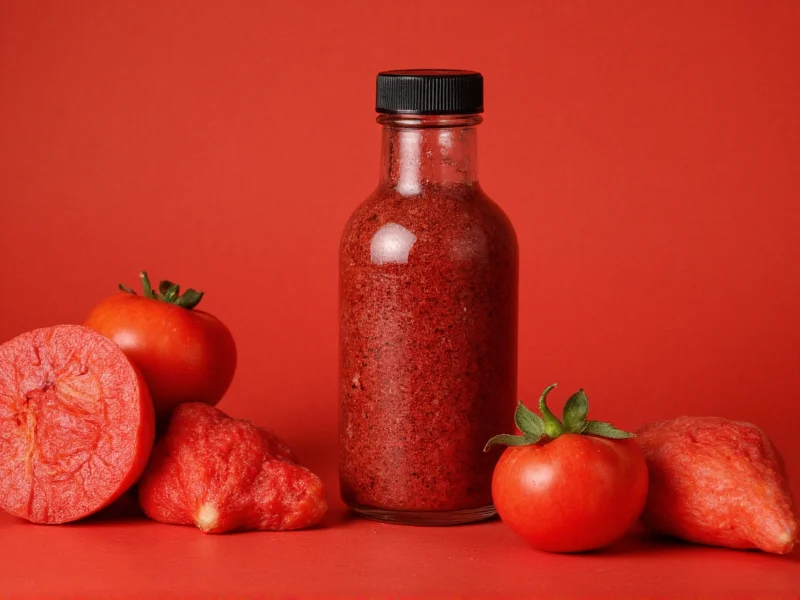Understanding what is el chamoy begins with recognizing its cultural significance in Mexican cuisine. This vibrant sauce transforms ordinary snacks into extraordinary culinary experiences through its complex flavor balance. Unlike simple hot sauces, authentic el chamoy incorporates fruit preservation techniques that date back generations.
Origins and Cultural Significance
The story of el chamoy traces back to Asian influences on Mexican food culture. Chinese immigrants brought preserved fruits called li hing mui to Mexico during the 19th century. Mexican artisans adapted these techniques using local ingredients like plums, apricots, and mangos, creating what we now know as chamoy. This fusion represents one of Mexico's most beloved culinary traditions.
Today, el chamoy appears everywhere in Mexican street food culture. From frutas con chamoy (fruit cocktails with chamoy) to chamoyadas (frozen drinks), this sauce has become integral to Mexico's vibrant food scene. Understanding el chamoy ingredients reveals why it resonates so deeply with Mexican palates.
Key Ingredients and Flavor Profile
Authentic chamoy starts with pickled fruit—typically apricots, plums, or mangos. The fruit undergoes a preservation process with:
- Chilies (usually arbol or guindilla)
- Vinegar or lime juice
- Salt
- Sugar or tamarind paste
- Spices like anise or cloves
The magic of chamoy flavor profile emerges from the balance between sweet fruit, salty preservation, sour citrus, and spicy chilies. This combination creates what Mexicans call sabor completo (complete flavor). Commercial versions sometimes add artificial colors and flavors, but traditional homemade chamoy relies solely on natural ingredients.
| Chamoy Type | Primary Fruit | Heat Level | Common Uses |
|---|---|---|---|
| Classic Chamoy | Apricot | Moderate | Fruit salads, tacos |
| Mango Chamoy | Mango | Mild to Hot | Mangonadas, candies |
| Tamarind Chamoy | Tamarind | Variable | Street snacks, sauces |
| Plum Chamoy | Plum | Mild | Candies, beverages |
Traditional Uses in Mexican Cuisine
Knowing how to use el chamoy properly enhances authentic Mexican dining experiences. Street vendors commonly apply it to:
- Fruit cups - Pineapple, jicama, and cucumber get drizzled with chamoy and chili powder
- Mangonadas - Frozen mango drinks swirled with chamoy sauce
- Tacos and snacks - Drizzled over elote (corn) or esquites (corn salad)
- Candies - Coating for tamarind balls and lollipops
Home cooks incorporate chamoy into marinades for meats or as a dipping sauce for spring rolls. The versatility of mexican chamoy sauce makes it indispensable in many kitchens. When exploring where to buy chamoy, most Latin American grocery stores carry bottled versions, though homemade chamoy recipe variations offer superior flavor.
Chamoy Variations Across Mexico
Regional differences create unique chamoy interpretations. Northern Mexico favors spicier versions with more chilies, while coastal regions incorporate tropical fruits like mango and tamarind. Some specialty shops offer artisanal chamoy with premium ingredients like habanero peppers or organic fruits.
The difference between chamoy and tamarind often confuses newcomers. While tamarind provides sourness in many chamoy recipes, pure tamarind sauce lacks the complex sweet-salty-spicy balance that defines authentic chamoy. Understanding this distinction helps appreciate traditional chamoy uses in authentic Mexican cooking.
Creating Authentic Chamoy at Home
Making homemade chamoy requires patience but yields superior results to commercial versions. The traditional process involves:
- Preserving fruit in salt and vinegar for several days
- Creating a chili paste with dried chilies and water
- Combining preserved fruit syrup with chili paste
- Adding sugar and lime juice to balance flavors
- Allowing flavors to meld for 24-48 hours
This method produces chamoy with depth and complexity that store-bought versions often lack. Many families guard their specific chamoy candy varieties and preparation techniques as closely held secrets.
Frequently Asked Questions
What exactly is el chamoy made of?
Authentic el chamoy combines pickled fruit (typically apricots, plums, or mangos), chilies, vinegar or lime juice, salt, and sugar. The fruit undergoes a preservation process that creates the sauce's distinctive sweet, salty, sour, and spicy flavor profile.
How does chamoy differ from regular hot sauce?
Unlike standard hot sauces that focus primarily on heat, chamoy delivers a complex balance of sweet, salty, sour, and spicy flavors. The fruit base and preservation process create a multidimensional taste experience that hot sauces typically don't provide.
Can I make chamoy without artificial ingredients?
Yes, traditional homemade chamoy uses only natural ingredients: fruit, chilies, vinegar, salt, and sugar. Many commercial versions contain artificial colors and flavors, but authentic recipes rely on the natural components to create the distinctive flavor profile.
What foods pair best with chamoy?
Chamoy complements fresh fruits (especially mango, pineapple, and jicama), corn-based dishes like elote, and even certain meats. It's commonly used in mangonadas (frozen mango drinks) and as a coating for candies. The sauce's versatility makes it suitable for both sweet and savory applications.
How should I store homemade chamoy?
Store homemade chamoy in an airtight container in the refrigerator for up to two weeks. The high salt and acid content acts as a natural preservative. For longer storage, freeze portions in ice cube trays, then transfer to freezer bags for up to three months.











 浙公网安备
33010002000092号
浙公网安备
33010002000092号 浙B2-20120091-4
浙B2-20120091-4